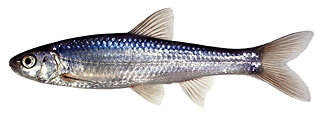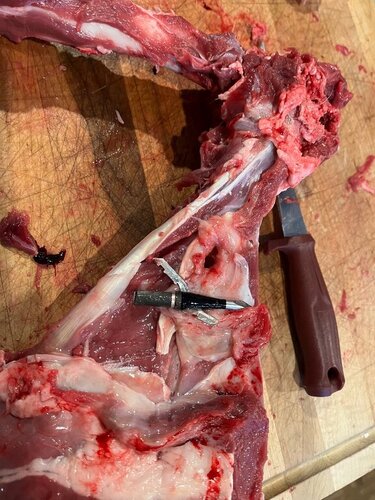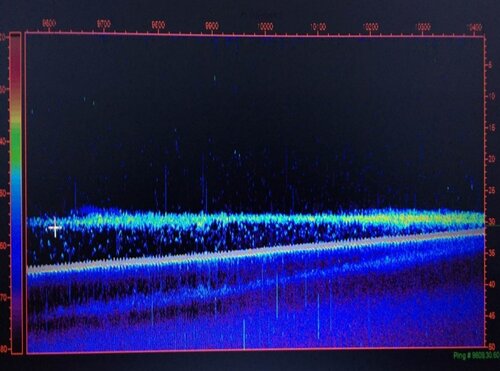-
Posts
239 -
Joined
-
Last visited
Content Type
Profiles
Forums
Events
Gallery
Store
Posts posted by schreckstoff
-
-
-
You all have perfectly described how I think, and what the data suggests, are the factors driving LO alewife year class strength.
Warm early springs increase spawn timing and number of spawns which allows the most age-0 alewife to grow as big as possible by winter. Larger size going in to winter increases the probability they make it through to be counted by trawl following spring. Nutrients and larval predation help set a carrying capacity going into winter and then winter duration can have an effect, especially when populations are dense. But we don’t have those densities like we used to (late 70s- early 90s). This is why biologists and managers from that era talked so much about winter severity but you don’t hear that as often now. Now we think spring timing, nutrients, and predation have a stronger influence.
-
If you post topics you are interested in here related to prey fish, native fish restoration, or other LO fish science I can try to address some of them that night.
-
 1
1
-
-
That does make sense, good call.
-
Nvm, I’m dumb, they are satellite from 11/20. I still put the most stock in the Monroe Co. #s, thanks BG for posting them.
#letsgobuffalo
-
The bays are waaay colder than that figure suggests. Is that the FVCOM prediction!
-
I’m a Coastwatch fan and would have said it’s a hot fall but I rely on the #s Gambler and colleagues record and report as being the most accurate on the lake. His graph says we are cold, like 2019. I was thinking it was a ‘warm’ fall air temp wise but the south winds have been crazy strong, tamales sense that those winds ‘should’ blow the warmest water out and let the coldest water in. The south shore embayment temps have been surprisingly cold given the air temps.
-
Show the eastern end too!
-
Wow those are some great deer. Not sure what’s more impressive the body size or the racks. Nice shooting! Love this thread!
-
 2
2
-
-
A heads up to anglers or hunters in Chaumont and Sodus Bay, there are a bunch of foam floats marking sunken transect lines and egg traps. If possible please avoid these areas.
I added high flyer buoys so these areas are easier to see from a distance. Buoys are primarily around Middle Shoal in Chaumont and Newark Island in Sodus.
The traps sit on the lake bottom from now till ice up and help us figure out the spawning habitat quality for Lake Whitefish and Cisco.
Don’t hesitate to reach out if you have any questions or concerns.
Thank you,BW
-
Interesting AA and good video. If I understand, you are saying CE trumps wind in driving LO currents. I’m having trouble rectifying that with what I’ve thought of as the general LO circulation being counter clockwise. What am I missing?
im all for correct terminology but I’m still not sure why “flip” or “turnover” (limnology term I’ve heard) are such poor descriptions of what happens to the thermal dynamics.
-
Adult LT survey, gillnetting. You should see the USGS boat (Kaho) and DEC boat (Seth Green) out and about. Remember to watch out for the buoys if you are trolling.
Gambler, that’s fricken cool that you have such good eye on the water! (And that my limnology blathering might have been close). Does pH timeseries go back in time like the temperature data does
-
Seasonal timing would suggest whiting, but whiting events are often associated with increased phytoplankton, so some of both likely.
More info here if interested: https://en.wikipedia.org/wiki/Whiting
From what I understand, in LO events are associated with blooms of picoplankton, which in turn naturally increases the pH to such a point that calcites precipitates out of the water and onto the plankton cells.
I read a paper that suggested mussels reduced whiting simply by lowering the lake's calcium carbonate concentration as opposed to filtering...although filtering likely has some effect as well.
Just looked at this paper that I think suggests diatoms are a nucleation source
https://eartharxiv.org/repository/view/2335/
-
-
That’s a Cisco hot spot so maybe. We see them “layer up” like that at this time of year but they are most often suspended, a little deeper/cooler .
-
 1
1
-
-
Much the same out of Fairhaven, DEEP temperature. Lots of slop waves leftover made for a rough morning. Fished 600-400ft, found 48-50deg water was 100-120ft down. Very blank screens, had one violent hit on the dipsy w/ meat but broke the line. Humbling day.
-
 1
1
-
-
You all know what the predators are eating, For silvers almost all Alewife but when and where other prey fish are abundant (Rainbow Smelt, Giz, Perch) they show up in diets. LT and Browns get up to a quarter of their energy from Goby but still rely on Alewife.
Alewife are definitely eating fleas and the correlations suggest that has caused Alewifie growth to sky rocket. I don't think I have the figure in a report anywhere, but basically once Bythotrephes abundance really increased around 2004 or 2005 then Alewife size at age increased. In some years Bytho didn't show up, and in those size at age comes back down. I've hypothesized it is partly because the fleas concentrate the energy of the smaller zooplankton, making it more efficient to feed on a larger item, but also because Bytho can be abundant waaay into the fall, essentially allowing Alewife an extra month. or 2 or 3 to feed efficiently.
-
 4
4
-
-
I'm here, and have been following closely, and learning a lot! It really is a great discussion.
Regarding Spring Prey fish (Alewife) survey -
2020 survey was canceled by administrative restrictions (COVID) and trust me no one was more pissed than me. The silver lining was that with the help of all the cooperating anglers and captains we were able to look at the stomach data and figure out the 2019 Alewife year class was below average. That is section 16 in this annual report: https://www.dec.ny.gov/docs/fish_marine_pdf/2020ontarioreport.pdf
One of the issues with the annual report is it comes out too late for decision making. This is why we've changed the reporting and data release format. Now the report and the data are all publicly released in Aug (or early Sep).
The 2021 survey results are reported here:
and data here:
https://www.sciencebase.gov/catalog/item/6140e604d34e1449c5d6011a
The 2020 Alewife was as big as we've seen in 20 years.
The 2022 survey was a success and the results are in progress. I still have to interpret the last few hundred otoliths from the Ontario boat, re run the numbers, and get the data QC'd and ready for release. Putting this report and data out early and publicly was to increase transparency and make sure decision makers and the public had the best available, objective information for their discussions. Keep up the constructive critiques, questions, and observations, they help us to improve our science.
-
 3
3
-
-
I have the exact set up as what Gambler said and it is my favorite gun.
Contemplating buying another for my family.
-
Bulletbob, check your PMs
-
Only 15 more pounds to go!
#50ontario
-
https://bigfrog104.com/holy-fish-first-time-angler-reels-in-35-pound-monster-from-lake-ontario/
I like some of the music they play on that station, but I get a little skeptical getting my fishing news from there.
-
When I first started thinking about where the 80 fish would be I was thinking east end cause of Salmon R, but we are gathering bits of data suggesting the always popular adage “west is best”, might apply to age 0 salmonids too.
#studyjuvenilefish
-
That’s exactly the info we are looking for, thanks!!





All done with Rage broadheads
in Big / Small Game
Posted
He was awesome, tons of potential, I let him walk before but once I saw the limp I didn’t want him to go to waste. I need to check but I think he was a 1.5yo, wide but thin, 8pt + a kicker. Only dressed 118#